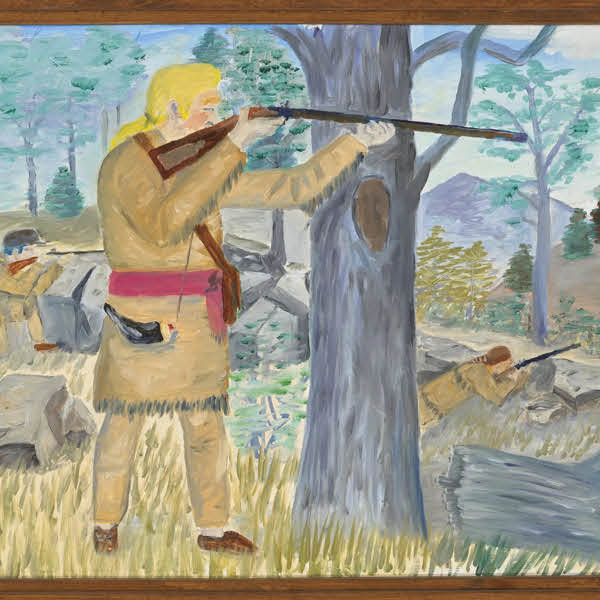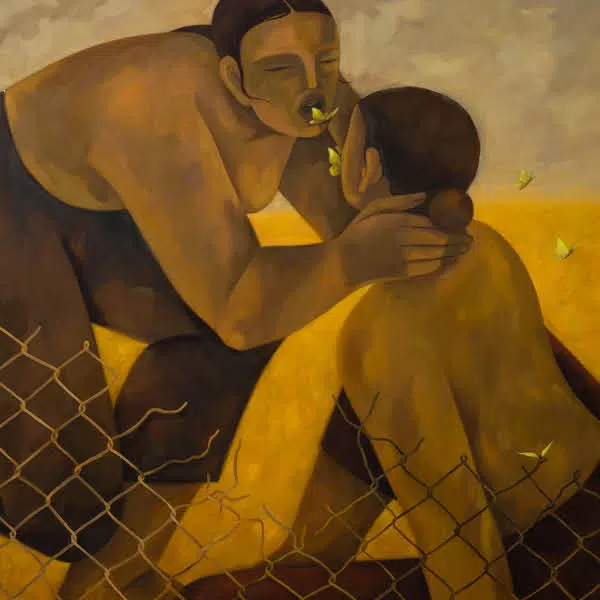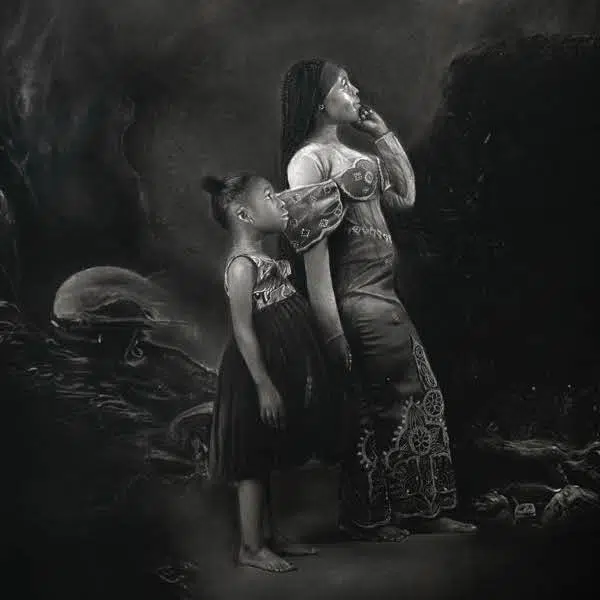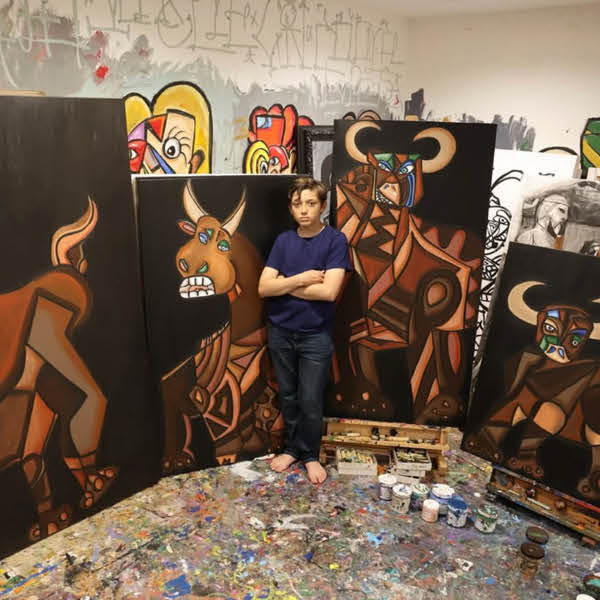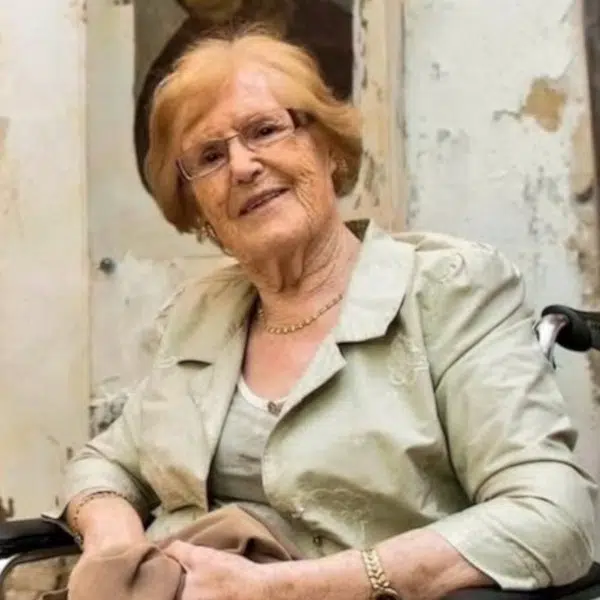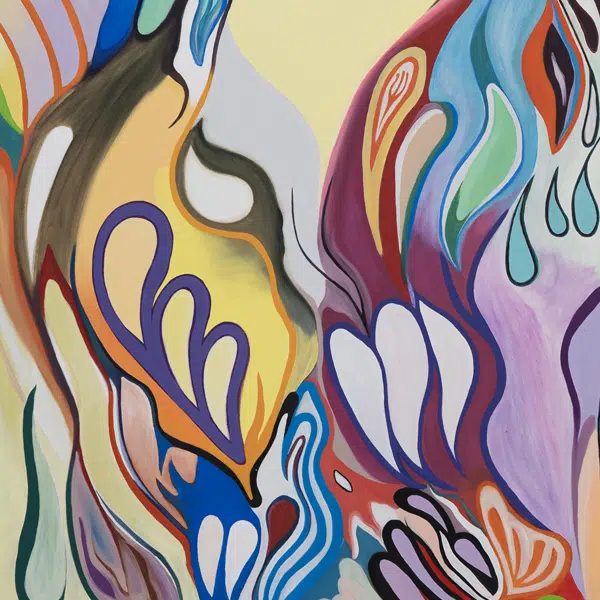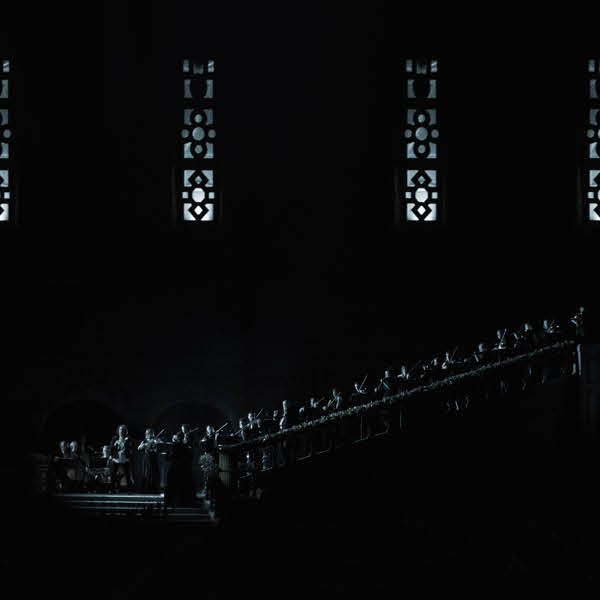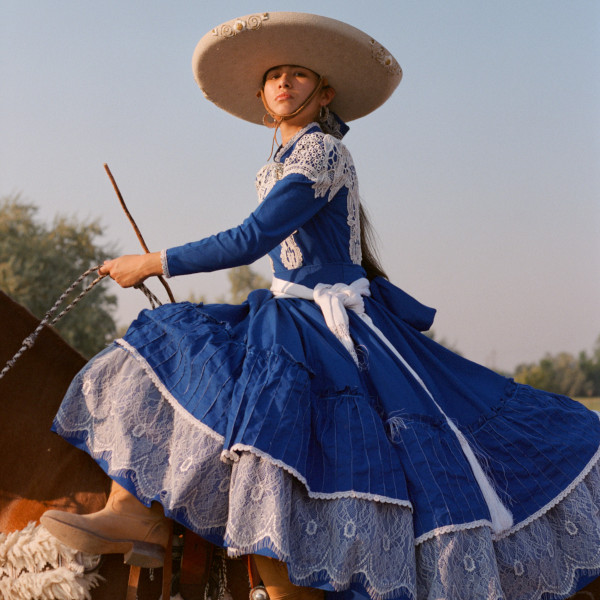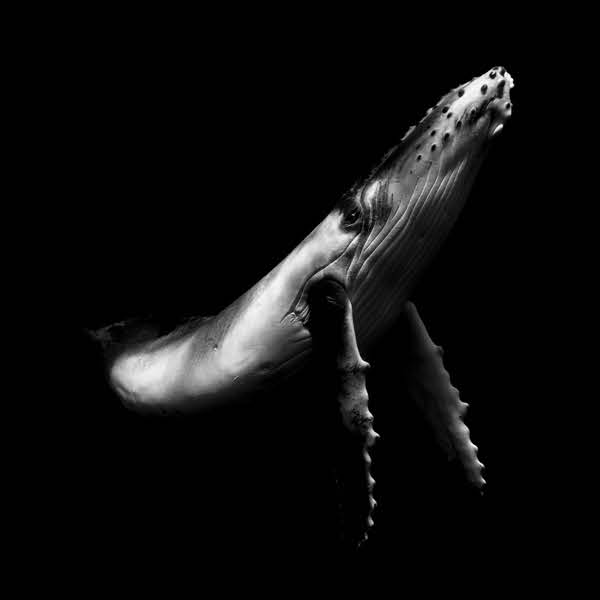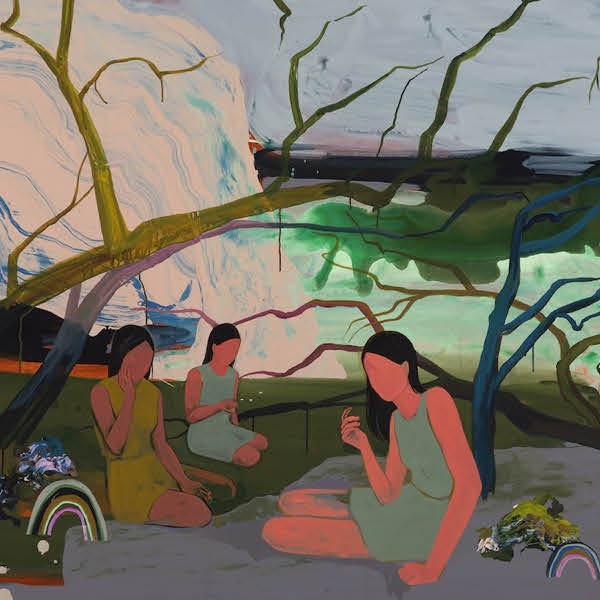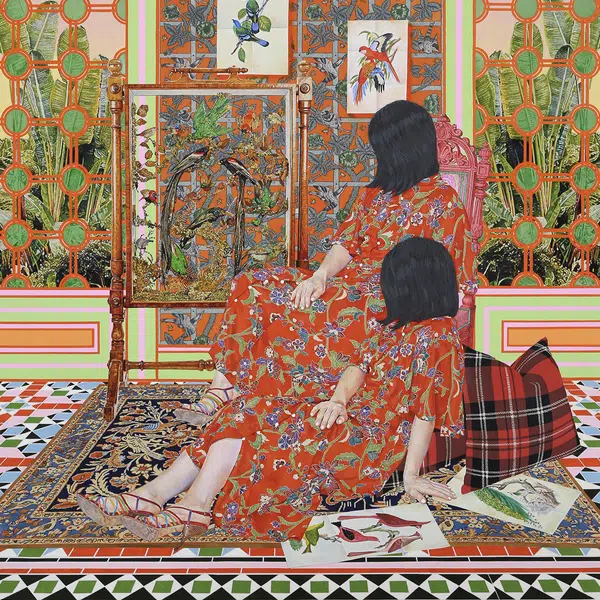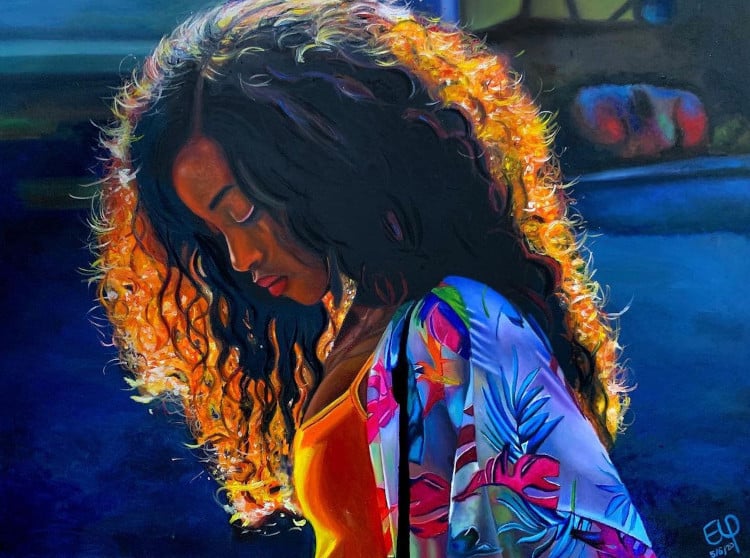
“Girl on Fire II”
For artist Ed Urena, art is a form of therapy. More than a pastime, hobby, or even a form of self-expression, painting brings him a much-needed sense of calm. The solace is welcome given his conditions. At age 28, Urena began losing his eyesight, having to go under the knife in a matter of days to save what was left. Then, art became more than a source of comfort as he was only able to afford his surgery after selling one of his paintings.
Although art's impact on his life has been tremendous, Urena isn't a full-time artist. “I go back and forth between working in the service industry and the engineering field to make ends meet, which I enjoy for the most part,” he tells My Modern Met. “Art will always be a side hustle, whether or not it becomes a career in the future. Even my loved ones notice if I haven’t made time for my art in a while, sometimes following with ‘Have you been painting lately?'”
Having found inspiration in music—particularly music videos by Lana del Rey and Lady Gaga—as well as his loved ones, Urena continues to develop his technique, proving that there are no limits to what artists can achieve. Continue reading for My Modern Met's exclusive interview with Ed Urena.
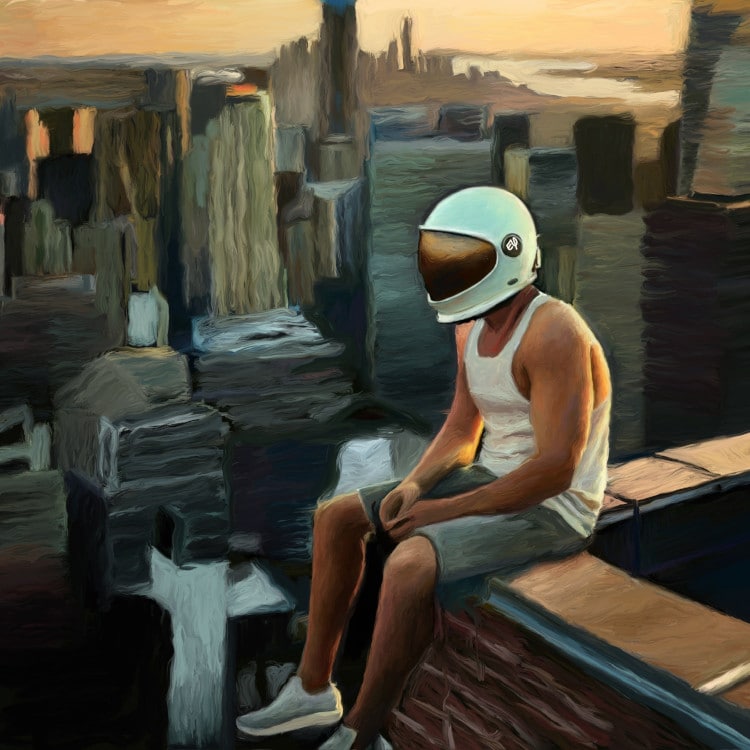
“34”
How did your painting journey begin?
My interest in painting began at a very young age. I was born near-sighted and struggled with seeing my surroundings, with a few facial scars to prove it. I remember being 5 years old and sitting on the floor, very close to the TV, watching Bob Ross. To me it felt like he was doing magic and I wanted to do the same. In kindergarten my teacher always left the arts & crafts corner available for me during playtime.
After moving to the Dominican Republic at the age of 6, I had very limited access to art supplies and spent my time at home and in school drawing. Teachers sat us in alphabetical order based on last names, which meant I was sat in the back of the classroom. I couldn’t see anything on the chalkboard, even when I sat on the floor in front of the class, so spending semesters in the back of a classroom meant that I spent my time drawing (often getting in trouble for it). When I finally got glasses at the age of 11-12 I felt like I saw the world for the first time, and my passion for colors was born.
Being visually impaired, and gay, made it challenging to learn, make friends, and avoid bullying both in school and at home. As a result I did not always do well academically (or socially) and used art as a form of escapism.
Eventually I moved back to NYC where I completed high school and my first year of college. During this year, I was studying criminal justice and took Art 101 as an elective, where I painted again for the first time since kindergarten. This is when I truly understood what painting does for me. I recreated Starry Night by Vincent van Gogh for a final project assignment and my professor asked to keep the painting for his office. This was the first time my art felt truly appreciated, the way I appreciated Bob Ross’ work.
That same year I had to move to Florida, where I was away from my only friends and the city life I was just starting to thrive in. I felt like I had nothing left and it was at this point that I made the decision to pursue art.
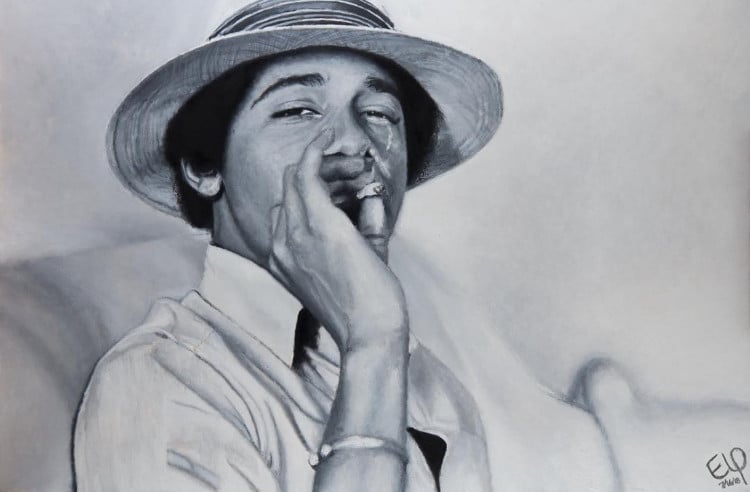
“Barry”
Did you paint professionally before becoming partially blind?
I started losing my eyesight at the age of 28, but didn’t realize it at first. I had saved money that I made off of one painting to pay for Lasik surgery. During my consultation I was informed that I did not qualify for this procedure, as I had developed an underlying condition: retinoschisis. The money I had saved to improve my vision was now used to save what vision I had left and 10 days later I was in the operating room for a vitrectomy. I spent six months wearing an eyepatch over one eye, and relying on my dominant eye to continue painting. Losing 20-25% of my vision was truly cathartic and although I couldn’t fully process how afraid I was, I also knew the importance of making art while I still had the ability.
How did painting change your life?
Painting helped, and still helps, with processing things I had yet to fully understand. As a form of meditation it allowed me to process chapters from my childhood, motivating me to focus on what I can do, rather than focusing on my limitations. Painting serves as a way for me to be in touch with myself and discover who I am based on how I see the world, instead of how the world sees me. The artistic community, along with my supporters, make me feel like I truly belong and deserve to take space in this world.
What is your creative process?
I often begin my process by doing a rough sketch of what I’m going to paint. I then follow this by painting the darkest areas and lightest areas of the image in order to build contrast to use for reference. I repeat this step while the image comes together. I think of painting like a 3D puzzle, where I add the shapes and tones that are the most obvious, slowly revealing the pieces I need to add.
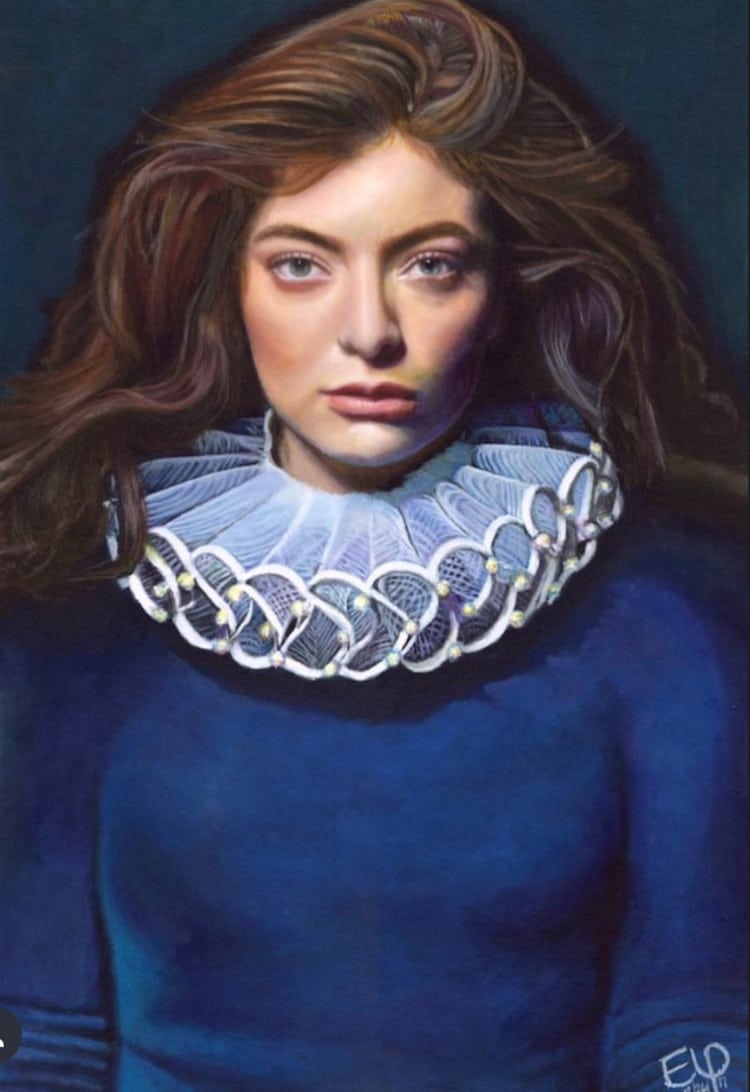
“Melodrama”
As a partially blind artist, what are the biggest challenges for you?
Being an artist in a heavily capitalistic society often means having to prioritize work/money over my art. This can leave little time, funds, and energy to feel inspired or be disciplined. Art supplies are expensive on their own and affording them means having to make sacrifices not many people are willing to make. My paintings can take anywhere between 30 and 200 hours to complete, sometimes causing me to leave my social life on the back burner. Ironically, my vision problems rarely get in the way of my work, as I often forget I’m visually impaired when I’m painting.
Is there a particular painting you're particularly proud of?
My painting This is America of Donald Glover is my most life-changing painting that I’m the most proud of. This was my first time working with oil after years of feeling intimidated by it. When I shared this painting on social media, I got recognition for it all over the world, including by Donald Glover’s team. This painting is what covered my costs for my surgeries and gave me the confidence I needed to think of art as a potential career.
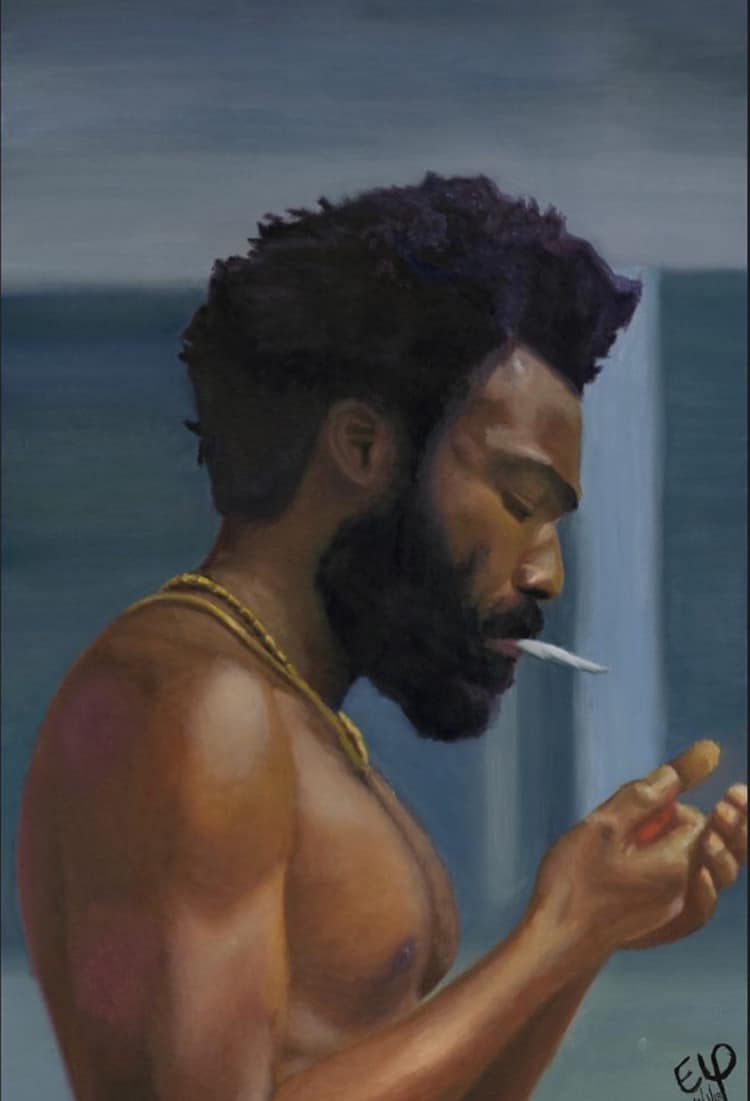
“This is America”
What do you hope people will take away from your art?
Honestly, anything. I feel a great amount of joy when someone feels a connection to my art, at any level. It’s even more satisfying when I’m told that my work inspires others to begin their artistic journey. I’ve appreciated Van Gogh’s work since I was a teenager and later began to identify with his life story. My favorite painting has always been Starry Night, which took place when Van Gogh sought help from a psychiatric hospital for his mental illness. It wasn’t until after I did the same that I learned about the story behind this painting. Putting my emotions, my story, my vision into my art and sharing it with the world can often make me feel vulnerable, so it is validating and liberating to hear when someone appreciates or relates to my work.
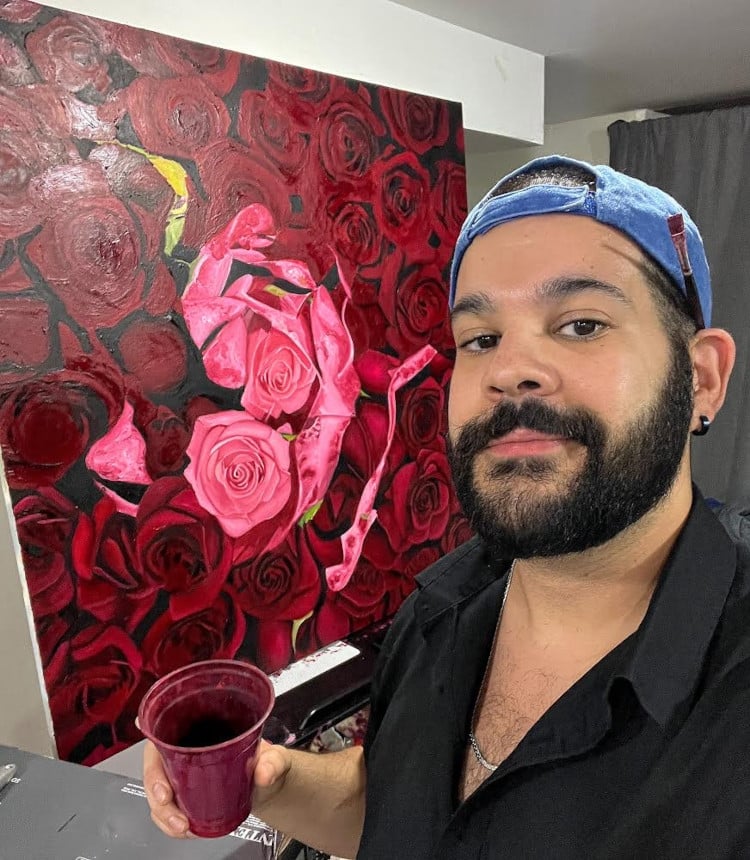
Ed Urena: Instagram
My Modern Met granted permission to feature photos by Ed Urena. Quotes have been edited for length and clarity.
Related Articles:
Museum Offers Color-Blindness Glasses To Help Visually Impaired Visitors View Art in a New Way
Blind Artist Creates Vibrant Mural Celebrating the Power of Music
Artist Daniel Arsham Helps Blind Man Enjoy His Tactile Sculpture
Powerful Oil Paintings of Emboldened Women Highlight Strength Needed To Confront Life’s Challenges











































































